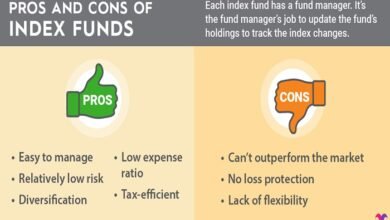A Complete Guide to Investments: Unlocking Financial Growth

Investments are a powerful tool for building wealth and securing your financial future. By allocating money to various assets or ventures, you aim to generate returns over time. Whether you are new to the concept or already managing a portfolio, understanding investments is crucial for making informed decisions. This guide will cover different types of investments, strategies to maximize returns, associated risks, and tips on managing your portfolio to achieve your financial goals.
What Are Investments?
Investments refer to the allocation of money or capital into assets or ventures with the expectation of generating a profit or return over time. People invest in a wide range of financial instruments, including stocks, bonds, real estate, and mutual funds, among others. The goal of investing is to increase wealth by earning interest, dividends, or capital gains. Understanding the nature of investments is key to making sound decisions. Each type of investment has its own risk profile and potential return, which should align with your financial goals and risk tolerance.
Types of Investments: A Variety of Options
Investments come in many forms, each offering unique benefits and risks. The most common types include stocks, bonds, real estate, and commodities. Stocks represent ownership in a company, offering potential for high returns, but with higher risk. Bonds are debt securities issued by governments or corporations and provide steady income but typically lower returns. Real estate investments involve purchasing property for rental income or capital appreciation. Commodities such as gold or oil are traded for profit, often in response to market conditions. Understanding these types of investments is crucial to creating a well-balanced portfolio.
The Role of Risk in Investments
Risk is an inherent part of investing. The potential for higher returns often comes with greater risk, while safer investments tend to yield lower returns. Assessing risk involves understanding both the volatility of the asset and the probability of losing money. While no investment is completely risk-free, diversifying your portfolio can help mitigate risk. For instance, combining stocks with bonds or real estate can balance out potential losses. Understanding your own risk tolerance is key to choosing the right investments and crafting a strategy that aligns with your long-term financial goals.
The Importance of Diversification in Investments
Diversification is a crucial strategy in managing risk in your investment portfolio. By spreading investments across different asset classes, industries, and geographic regions, you reduce the impact of any single investment’s poor performance. For example, if one sector experiences a downturn, your other investments might remain stable or even perform better. A diversified portfolio can help smooth out volatility and enhance the potential for returns. Understanding how to diversify effectively is vital for managing both risk and reward in your investment strategy.
The Power of Compounding in Investments
One of the most significant factors that contribute to investment growth is compounding. Compounding occurs when the returns on your investments are reinvested, generating earnings on both the original amount and any accumulated interest or dividends. This snowball effect can significantly increase the value of your investments over time. The longer your investments are left to compound, the greater the potential for growth. Starting to invest early allows you to take full advantage of compounding, leading to substantial wealth accumulation over the years.
Active vs. Passive Investments: Which is Better?
When it comes to investing, you can choose between active and passive investment strategies. Active investing involves making frequent decisions to buy, sell, or trade assets based on market analysis, trends, and forecasts. It requires time, knowledge, and experience but can offer higher returns if done correctly. On the other hand, passive investing involves a more hands-off approach, typically focusing on long-term investments, such as index funds or exchange-traded funds (ETFs). Passive strategies generally have lower fees and can be ideal for those who prefer to avoid daily management of their investments.
Tax Considerations in Investments
Taxes play an essential role in the return on investments. Certain types of investments, like tax-deferred retirement accounts, allow your investments to grow without paying taxes until you withdraw the funds. Capital gains taxes apply to profits earned from the sale of investments, with different rates for short-term and long-term holdings. Understanding the tax implications of your investments is vital for optimizing your returns. By holding investments for longer periods, you can reduce your capital gains tax liability. Additionally, tax-efficient investment strategies can help you keep more of your profits.
How to Start Investing
Starting to invest might seem daunting, but it’s simpler than you might think. The first step is to set clear financial goals, whether it’s saving for retirement, purchasing a home, or funding your children’s education. Once your goals are defined, determine your risk tolerance and choose the right investment vehicles that align with your objectives. Many beginners start with low-cost index funds or mutual funds, which offer diversification and are managed by professionals. Additionally, you can consider using robo-advisors or financial planners to help guide you through the initial stages of investing.
Monitoring and Adjusting Your Investment Portfolio
Investing is not a one-time activity; it requires ongoing monitoring and adjustments. The performance of your investments should be reviewed regularly to ensure they are on track to meet your goals. Market conditions, economic factors, and changes in your personal financial situation can all affect the performance of your portfolio. Periodically rebalancing your investments can help maintain your desired asset allocation and risk level. Additionally, as you approach your financial goals or reach milestones, you may need to adjust your investment strategy to ensure it aligns with your evolving objectives.
The Impact of Global Markets on Investments
Global markets have a profound impact on investments, as economic conditions, political events, and international trade policies can influence the performance of various asset classes. For example, a recession in one country may affect global stock markets, while political instability can lead to fluctuations in commodity prices. Investors need to stay informed about global developments and how they may impact their investments. A diversified portfolio that includes international exposure can help reduce the impact of local market downturns, but it’s important to understand the risks and opportunities in different regions of the world.
Conclusion
Investments are a fundamental part of building wealth and securing your financial future. By understanding the various types of investments, the importance of risk management, and strategies like diversification and compounding, you can make informed decisions that align with your financial goals. Whether you are new to investing or looking to optimize your existing portfolio, taking the time to educate yourself and seek professional guidance will ultimately lead to greater financial success. Remember that investing is a long-term endeavor, and patience, discipline, and strategy are key to achieving meaningful returns over time.
FAQs
1. What are the different types of investments?
The main types of investments include stocks, bonds, real estate, commodities, and mutual funds. Each type offers unique benefits and risks.
2. How can I reduce the risk of my investments?
Diversifying your portfolio across different asset classes, industries, and geographical regions can help reduce risk by spreading potential losses.
3. What is compounding, and why is it important in investments?
Compounding is the process where the earnings on your investments generate their own earnings, leading to exponential growth over time.
4. Should I choose active or passive investing?
It depends on your preferences. Active investing requires more time and expertise, while passive investing is a more hands-off approach with lower fees.
5. How do taxes affect my investment returns?
Taxes impact your returns through capital gains tax and income tax. Tax-efficient strategies, like long-term holding or tax-deferred accounts, can help maximize returns.



